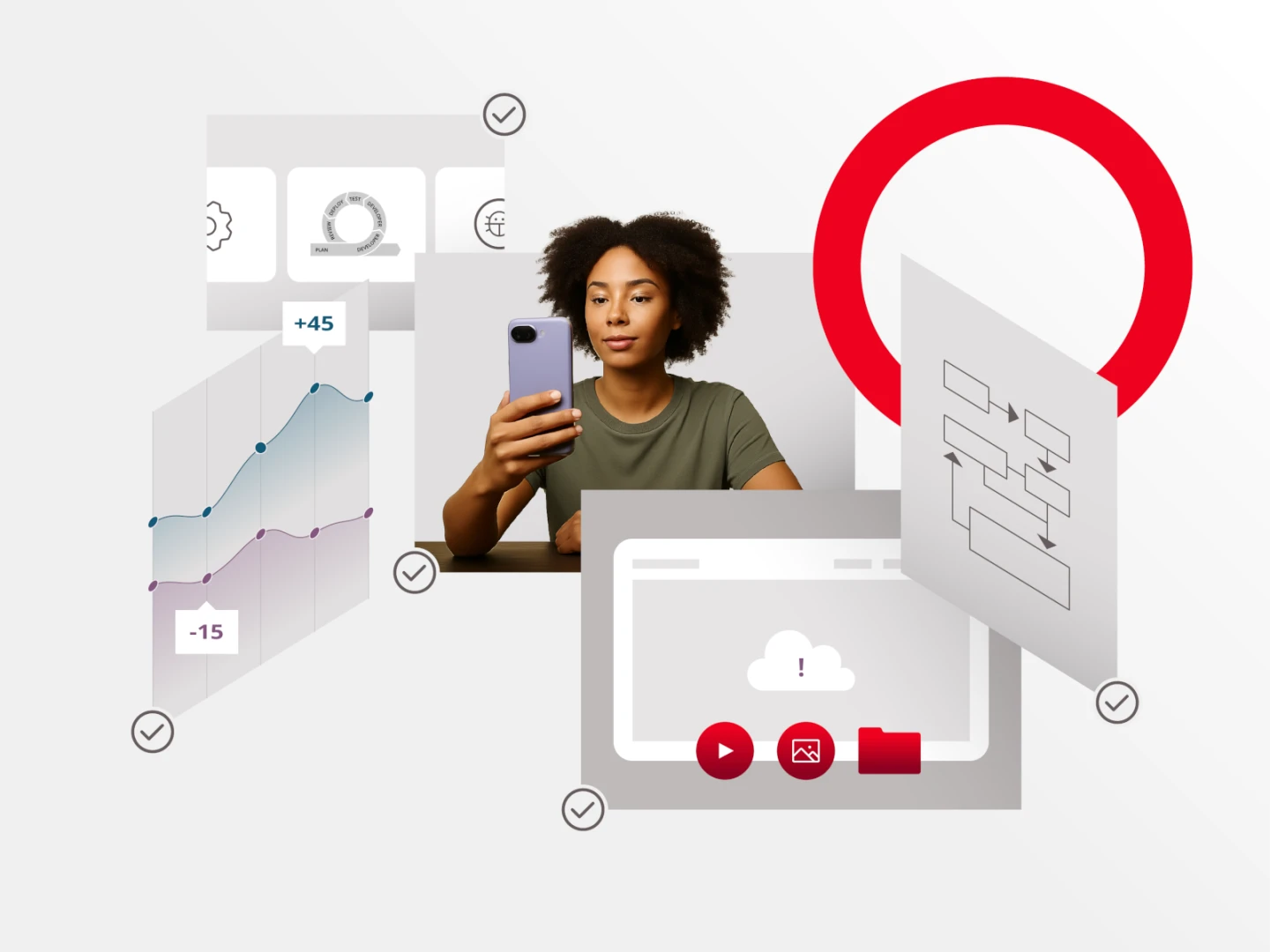Understanding the need for migration
What are the key pain points driving this CMS migration?
Clearly define the reasons behind the migration. Are you dealing with slow publishing workflows, high maintenance costs or lack of flexibility? Understanding these challenges will help set priorities.
- Example: A news publisher struggling with an outdated CMS may experience slow article updates and poor mobile responsiveness, leading to declining engagement.
Are outdated workflows slowing down content creation and publication?
A modern CMS should improve editorial efficiency, not create bottlenecks. Identify gaps in collaboration, approval processes and automation.
- Example: Your current CMS may require editors to copy and paste content across multiple platforms manually, whereas a modern CMS can streamline this with a “create once, publish everywhere” approach.
Are inefficiencies in your current CMS leading to higher costs?
Outdated systems often require costly maintenance, custom development or inefficient workarounds.
- Example: If your CMS lacks built-in integrations for analytics, email marketing or social media, you may be spending extra time and money on workarounds.
Is your existing tech stack preventing you from scaling or innovating?
An outdated CMS may lack the ability to support personalization, AI-driven recommendations or omnichannel publishing.
- Example: If your e-commerce website wants to implement AI-powered product recommendations but your CMS doesn’t support it, growth will be limited.
Project planning and organizational alignment
Has your organization assessed its appetite for change?
Migrations often require workflow adjustments and training. Ensure leadership and teams understand the level of change required.
- Example: If your company is used to a traditional publishing model, switching to a headless CMS may require a shift in how teams think about content structure.
Do all stakeholders understand how their roles and responsibilities may shift?
CMS migration affects multiple departments, from marketing to IT. Ensure all teams know their role in the transition.
- Example: A legal team used to approving content in Word documents may need training to review and approve directly in the CMS.
Have you developed an organizational change management plan?
Change management helps minimize resistance and ensure smooth adoption.
- Example: Holding regular training sessions and appointing CMS “champions” in different teams can help ease the transition.
Stakeholder and vendor communication
Are internal teams aligned on common terminology (e.g., content types, workflows, taxonomies)?
Misalignment in language can lead to confusion. Clearly define terms like “articles,” “modules” and “tags” across teams.
- Example: What one team calls a “story” may be labeled as an “article” in the CMS. Standardizing terminology prevents miscommunication.
Do vendors and external partners understand your organization’s language and expectations?
If you’re working with CMS vendors or third-party developers, ensure they understand your business requirements.
- Example: A vendor offering “dynamic personalization” may define it differently than your marketing team — clarify expectations early.
Have clear expectations and communication channels been established across all teams?
Having a structured feedback loop prevents misalignment during migration.
- Example: Setting up a shared Slack channel or weekly status meetings ensures updates and concerns are addressed in real time.
Scope and flexibility
Is there a structured process in place for handling project changes and re-scoping?
Migration projects often encounter scope creep. Establish a plan for handling mid-project adjustments.
- Example: If halfway through migration you realize a new integration is needed, define how these changes will be assessed and approved.
Has a decision-making group been identified for approvals?
Having a governance team streamlines approvals and prevents decision-making delays.
- Example: A content migration team should include representatives from IT, editorial, marketing and legal to approve changes efficiently.
Are contingency plans in place for unexpected challenges during migration?
Be prepared for data loss, missing integrations or unforeseen performance issues.
- Example: Backing up all content and running a pilot migration before full deployment can prevent critical failures.
Technical considerations
Have you mapped out all integrations with third-party tools and platforms?
Ensure the new CMS can connect with existing tools such as analytics, CRM and marketing automation platforms.
- Example: If your CMS needs to integrate with Salesforce, confirm API compatibility before migration begins.
Is there a strategy for handling legacy content and URL redirects?
Migrating content without a plan for URLs can lead to SEO loss and broken links.
- Example: Use 301 redirects to ensure old URLs lead to the correct pages in the new system.
Are there scalability and security requirements that the new CMS must meet?
A CMS should be able to handle traffic spikes, content personalization and evolving security needs.
- Example: If your media site experiences traffic surges during breaking news, ensure the CMS can scale dynamically.
Quality assurance and testing
Have you established a clear QA process, including test cycles and bug tracking?
Define who is responsible for testing functionality, performance and security.
- Example: A structured QA process ensures that issues — such as images not displaying correctly — are caught before launch.
Do you have test scripts prepared to validate CMS functionality before launch?
Testing should cover content migration, integrations and UX consistency.
- Example: If an editorial team relies on AI tagging, test how well the CMS auto-tags content before go-live.
Has a user acceptance testing plan been created to ensure the new CMS meets business needs?
Involve real users in testing to confirm the system is intuitive and functional.
- Example: Journalists using the CMS should test article publishing to ensure workflows remain efficient.
Post-migration strategy
Is there a training plan in place for content creators, editors and developers?
Adoption rates improve when users are properly trained.
- Example: Offer hands-on training and documentation to help teams get up to speed quickly.
Have ongoing support and maintenance requirements been identified?
Identify who will handle bug fixes, updates and new feature requests post-launch.
- Example: Assigning an internal CMS admin ensures a point of contact for ongoing support.
Is there a roadmap for future optimizations and enhancements?
CMS migration isn’t a one-time project — it requires continuous improvement.
Example: Plan for future AI-powered personalization or headless CMS enhancements based on business needs.
By addressing these critical questions with context and real-world examples, your CMS migration can be a strategic, well-planned transition rather than a disruptive challenge.






